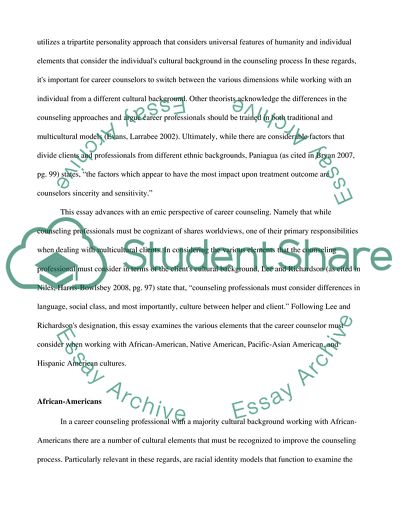Cite this document
(Multicultural Career Counseling Essay Example | Topics and Well Written Essays - 2500 words, n.d.)
Multicultural Career Counseling Essay Example | Topics and Well Written Essays - 2500 words. Retrieved from https://studentshare.org/culture/1743893-career-counseling-paper
Multicultural Career Counseling Essay Example | Topics and Well Written Essays - 2500 words. Retrieved from https://studentshare.org/culture/1743893-career-counseling-paper
(Multicultural Career Counseling Essay Example | Topics and Well Written Essays - 2500 Words)
Multicultural Career Counseling Essay Example | Topics and Well Written Essays - 2500 Words. https://studentshare.org/culture/1743893-career-counseling-paper.
Multicultural Career Counseling Essay Example | Topics and Well Written Essays - 2500 Words. https://studentshare.org/culture/1743893-career-counseling-paper.
“Multicultural Career Counseling Essay Example | Topics and Well Written Essays - 2500 Words”. https://studentshare.org/culture/1743893-career-counseling-paper.


